You can back up your site quickly and easily using Hostinger, thanks to the weekly backup feature included in all Hostinger plans. Get started today for 80% off with our Quick Sprout code.
Anyone who’s lost their website to changes, crashes, or updates will tell you that there’s nothing more important than backing up your site. Not only can you lose your content, design, and data if your site crashes, but you can also put your users at risk.
Backing up a site often falls last on a website to-do list, but it should be a priority, and considering how easy it is, there’s no reason you shouldn’t do it weekly. In this article, we’ll break down the steps to back up your website and the tools that’ll help you do it.
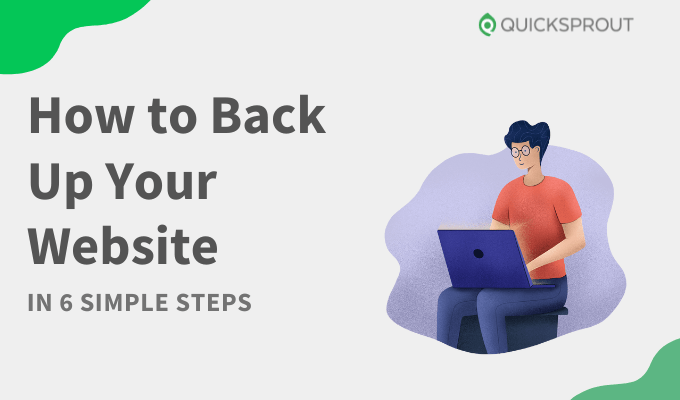
The 10 Best Hosting Providers For Backing Up Your Website
When it comes to backing up your site, it’s a lot easier if you have a good web hosting provider to support you. These are our top picks for hosting providers that keep your website safe and up to date:
- Hostinger – Best overall
- DreamHost – Best value for shared hosting
- Bluehost – Best for new WordPress websites
- HostGator – Best for simple websites
- GreenGeeks – Best eco-friendly hosting
- SiteGround – Best WordPress-certified host for speed and security
- A2 Hosting – Fast & reliable shared hosting
- InMotion – Best VPS hosting
- WPEngine – Best-managed WordPress hosting
- Nexcess – Best for ecommerce hosting
To see our full review of each hosting provider and find out why we recommend them, read our in-depth guide.
Backup Your Website in 6 Easy Steps
Unless you want to lose your website and all your content, you need to back it up regularly. In the article, we’ll break down several ways you can back up your site in a step-by-step guide.
- Sign Up for Hostinger
- Back Up Your Site With Hostinger
- Download A Backup To Your Device
- Upload A Backup To Your Site
- Download A Backup Plugin
- Create A Backup Using A Plugin
In this guide, we’ll be using Hostinger because it’s affordable, reliable, secure, and easy to learn. Plus, it includes weekly backups in all of its plans, which makes backing up your website and restoring it much easier.
You can still follow the steps with another hosting provider, but they might look slightly different on your dashboard. If you want to try Hostinger, you can get started today for 80% off.
Step 1: Sign Up for Hostinger
Technically, this step is optional. You can use any hosting provider you like or use the one you’re currently running your site on.
We’re just using Hostinger for this tutorial because it’s affordable, easy to use, and very intuitive when it comes to backing up a site. Plus, all of Hostinger’s plans come with weekly backups, making it one of the most secure hosting providers out there.
With that said, head over to Hostinger’s homepage to get signed up. Go to Hosting, Web Hosting, and then choose your plan. We recommend choosing the Premium Web Hosting Plan because it comes with a free domain and is more affordable, but all of Hostinger’s plans come with free weekly backups.
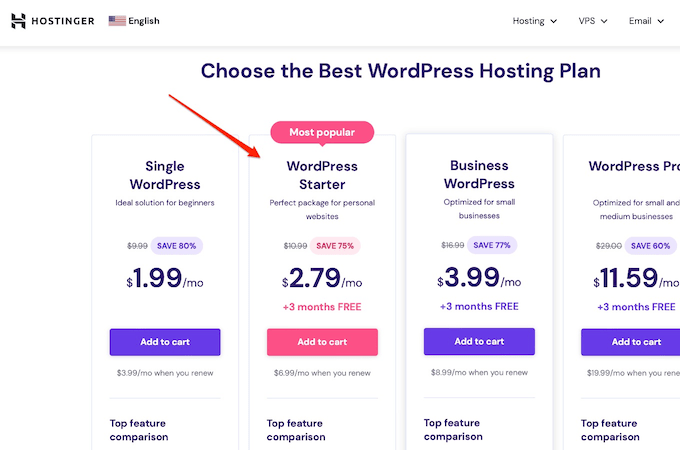
Once you’ve chosen your plan, add it to your cart and check out. Choose your plan’s period, create an account, and pay.
Make sure that your website is set up or connected to your account, then head over to your dashboard for the next step.
Step 2: Back Up Your Site With Hostinger
Now that you’ve signed up with Hostinger, you can back up your site manually. This is the easiest way to back up your site and the first of the three methods we’ll be looking at today.
One of the best things about Hostinger is that it includes manual weekly backups in all plans, which is why we’re recommending them for this tutorial. This means that you can rely on Hostinger to keep your data and content safe, even if you forget about backing it up manually.
Technically, this means you don’t need to do this step with your Hostinger account, as Hostinger will back up your site for you. But having the option to back up your website manually is still useful in case you have just added content or changed your theme.
To do this, you need to go to your Hostinger dashboard and select Websites, Manage, and Backups. You then need to select Generate New Backup and then select Continue.
This will create a new backup and save it to your files. You can then download this to your device or hard drive, which we’ll talk through in the next step.
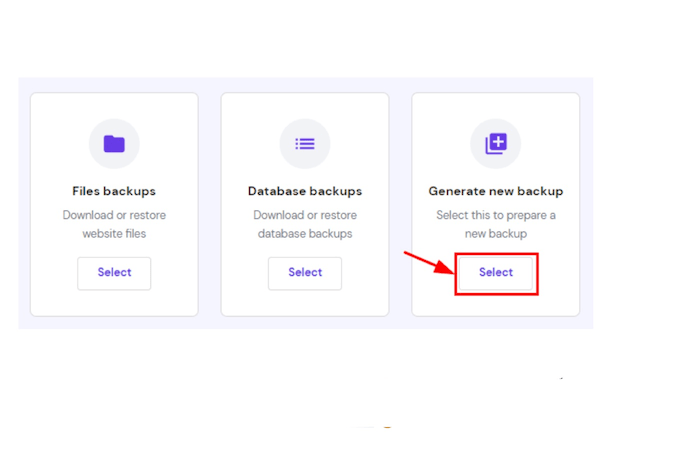
Step 3: Download A Backup To Your Device
Although you can save backups directly in your Hostinger account, it’s better to be safe by making multiple backups in different places. Our next method for backing up a site is to download it directly to a device or an external hard drive.
This is also useful if you ever decide to move to a new hosting provider, as you may be able to use these backups to migrate your site to a new host. Luckily, downloading a website backup is just as easy as generating one.
Start by going to your Hostinger dashboard and selecting Websites. You then need to select File Backups and look for the most recent backup from your site.
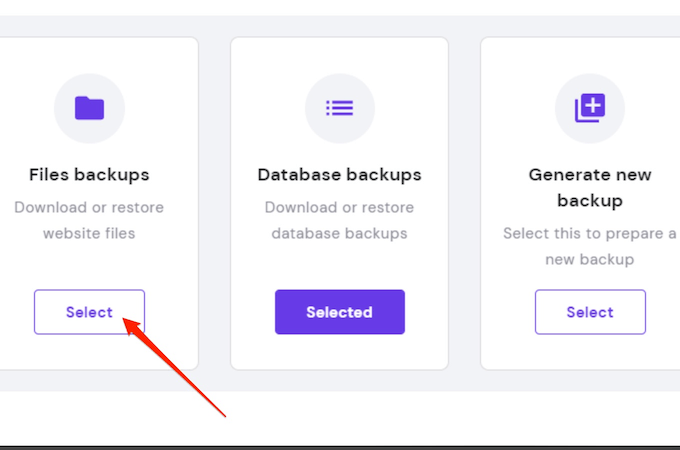
Choose this backup and select the next step and download all files. You then need to wait a few minutes while your files are prepared, and then you can download them to your chosen storage spot. You can download them directly to your device, a memory stick or hard drive, or even a cloud platform like DropBox.
Bear in mind that if your website has a lot of coding, this can take up a lot of space on your device. That’s why we recommend having an external hard drive, especially if you want to regularly back up your site.
Once you download these backups, you then need to upload them to Hostinger if you want to use or restore them. Head on to the next step to learn how to do this.
Step 4: Upload A Backup To Your Site
Restoring a backup is easy. You follow similar steps to what you would when it comes to downloading your website to a device.
If you are using one of Hostinger’s manual backups, you just need to go to Website, Manage, Backup, and then select Restore. After choosing the most recent backup, select continue, and your site will be backed up to the last save automatically.
But if you want to upload one of the backups you made to your device, you have a few extra steps to take.
From your Hostinger dashboard, select Websites and Manage. This time, you need to go to the section that says Import Website under the website tab.
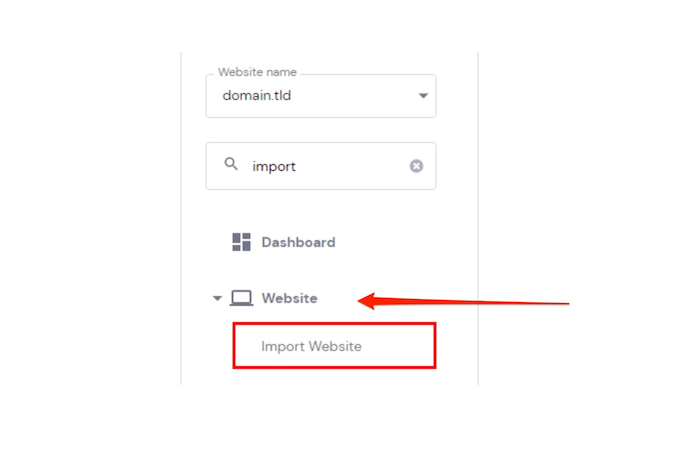
You’ll be asked to choose a file, which you can then upload from your device. Once you’ve chosen the file, select import. Your file will then be uploaded and extracted to your public_html folder automatically.
These are the two easiest ways to back up your site. However, you still have one option left, which is to use a backup plugin. To learn how to do this, move on to the next step.
Step 5: Download A Backup Plugin
As we said, you can never have too many backups.
Using a backup plugin does one of two things; you have an extra backup in case the other two methods somehow fall through, and you have a backup that is easy to transfer between hosting providers.
Any hosting provider you use will let you download plugins, especially if you’re using WordPress to run your site, like with a Hostinger account.
To download a plugin, go to your plugins dashboard, search for and choose a plug-in, select Add New, and then Upload Plugin. For backup plugins that can save and copy your site, there are lots of great options, but these are our top recommendations:
All of these are intuitive and easy to work with, and you can find detailed tutorials on how to use each one from the creators. Once you’ve chosen one that meets your needs, you can upload and activate the plugin.
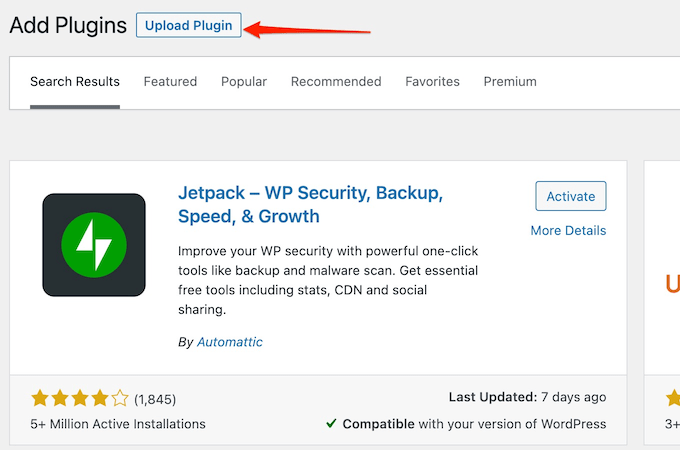
Once you have set up your plugin, move on to the next step.
Step 6: Create A Backup Using A Plugin
Once you’ve activated your plugin, you can use it to create a backup.
Every plugin will have different instructions on how to do this, but it should be simple and similar to creating a manual backup with Hostinger.
A good thing about using a plugin is you’ll be given options as to where you can download your backup. You can save it to your device, in the plugin software, or in a cloud drive, like DropBox.
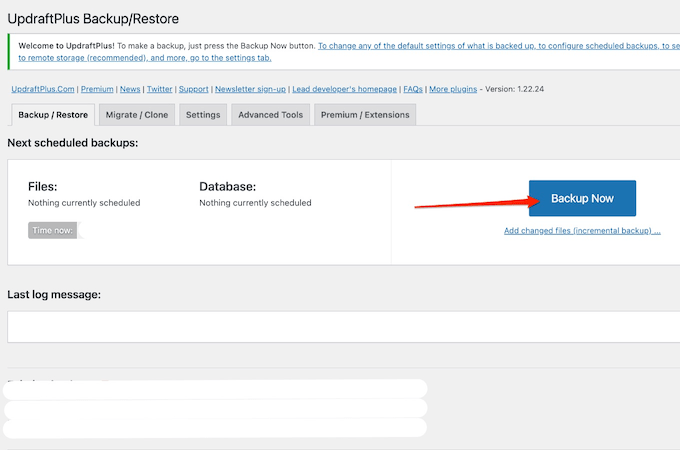
It’s an easy way to make an extra backup and a good way to set reminders if you’re forgetful. Like with Hostinger, most backup plugins will let you set a schedule for when you want to back up, so you don’t have to remember to do it manually.
Once you’ve finished making a backup with your plugins, you’ve got three separate ways to back up and restore your site, which means there’s no risk of losing anything!
Final Thoughts About How To Back Up Your Website
Now that we’ve broken down the three easiest ways to back up a website, you can see how fast it is. Many people avoid it because they think it’s complicated or time-consuming, but with the help of a plugin or Hostinger, you can just set it and forget it.
With these three methods, especially with a hosting provider like Hostinger that backs up automatically, there’s no reason to risk your content or data.
